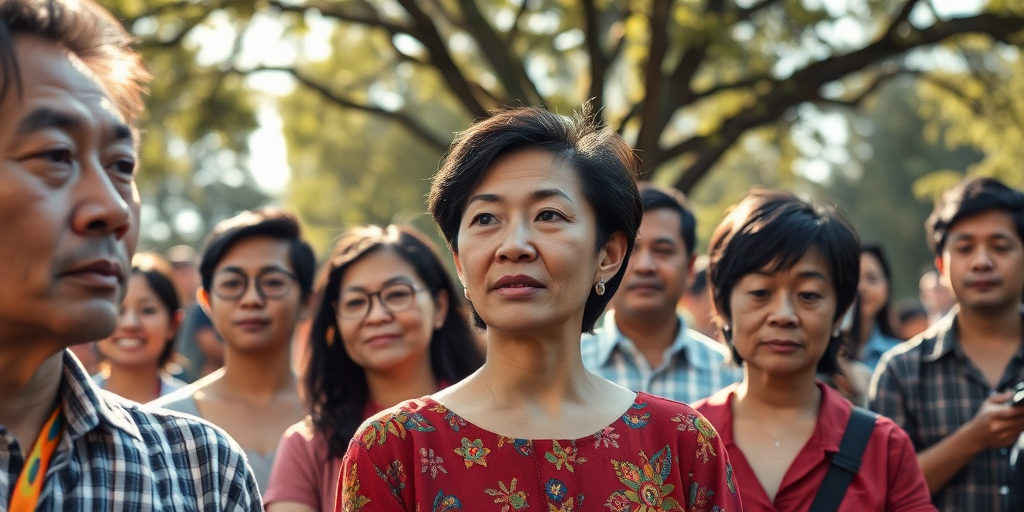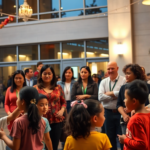Oklahoma’s Language Diversity Grows as Vietnamese Ranks 3rd
The cultural and linguistic landscape of Oklahoma is undergoing a notable transformation. A recent U.S. Census Bureau report reveals that Vietnamese has become the third most spoken language at home across the state, following English and Spanish. This shift highlights ongoing immigration trends, where communities are opting for states in the Midwest and South, like Oklahoma, over traditional coastal metropolises.
Oklahoma’s Linguistic Landscape
In cities such as Oklahoma City and Tulsa, the increasing presence of the Vietnamese language speaks volumes about broader demographic shifts. As David Nguyen, a community organizer in Oklahoma City, reports, “Our community is growing not just in numbers, but also in influence. We feel more at home here and are excited to contribute to the state’s diversity.”
This trend in Oklahoma mirrors developments in neighboring states like Texas, Kansas, and Georgia, where Vietnamese-speaking communities have witnessed steady growth over the past few decades. These shifts are subtly reshaping communities, infusing new flavors and traditions into the local culture.
National Perspective on Multilingualism
On a national scale, nearly 22% of U.S. residents aged five and older now speak a language other than English at home. This figure has doubled over the past 40 years, underscoring the United States’ evolving linguistic identity. In states like California, this number climbs to 44%, contrasting sharply with just 2.5% in West Virginia.
While Spanish remains the foremost non-English language spoken at home across most states, including Oklahoma, Vietnamese has emerged as a significant language in seven states. This evolution reflects the changing dynamics of immigrant communities across the country. As William Frey, a demographer at The Brookings Institution, points out, “The multilingual nature of America is deeply connected to waves of immigration, making it a defining feature of our national identity.”
Debating the Country’s Language Identity
Simultaneously, the debate around America’s multilingual identity has been revitalized by a recent executive order. President Donald Trump declared English as the official language of the United States, a move that has sparked considerable discussion regarding the country’s rich tapestry of languages and cultures.
District languages like Vietnamese are now at the center of these discussions. Tu Pham, a Vietnamese-American activist, argues, “Even if English is the official language, our heritage languages contribute to what makes America unique. Preserving our native tongues is important for cultural preservation and passing on traditions.”
Impact on the Oklahoma Community
For Oklahoma, the rise in Vietnamese language usage is a clear indicator of its growing attractiveness as a destination for immigrant families. As these communities settle, they bring with them diverse customs and traditions, which enrich the state’s social and cultural fabric. Allison Brady, a university professor in Tulsa, sees value in this diversity: “Our students benefit from exposure to different languages and cultures. It broadens their perspectives and prepares them for a global workforce.”
The changing linguistic landscape also invites challenges, such as ensuring access to language education and social services for non-English speakers. Local schools and community organizations may need to adapt resources and programs to support these evolving needs.
Connecting with Community Initiatives and Local Stories
Oklahoma’s local media, such as News On 6, provide vital platforms for these community stories, offering a variety of content including news, weather updates, educational resources, and more. Other community efforts, like the Food Bank of Eastern Oklahoma’s summer feeding program and Zink Lake Rentals’ recreational offerings, also play a role in fostering inclusive community spaces.
Moreover, the imminent severe weather warnings for Tulsa are a reminder of the importance of accessible communication, emphasizing the need for multilingual alerts to ensure everyone’s safety. News outlets like News On 6 are essential in keeping all residents informed, showcasing the state’s commitment to sharing its stories and insights comprehensively.
Future Implications for Oklahoma
Looking ahead, the growing Vietnamese-speaking population may encourage further cultural exchanges, events, and festivals celebrating Vietnamese heritage. This could foster greater community participation and understanding across cultural divides.
Local government and community organizations may also collaborate to enhance the integration of Vietnamese-Americans, promoting programs that celebrate multiculturalism while addressing challenges like language barriers and educational access.
Ultimately, the rise of Vietnamese as a major language in Oklahoma underscores a broader narrative of American diversity. It encapsulates the local impact of global migration trends and enriches the state’s identity as a welcoming mosaic of languages and cultures. As Oklahoma continues to grow in linguistic diversity, its communities can anticipate a future that is as inclusive as it is vibrant, reflecting the ideals of the American melting pot.







